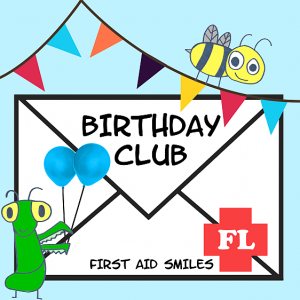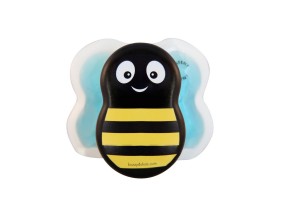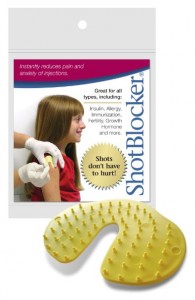This is a collection of research and information on various autoinflammatory diseases. Each one covers multiple fever syndromes in one article, which is helpful to use to compare symptoms seen in a patient to symptoms seen in each of these conditions. Several include lab tests to consider and treatment options.
Autoinflammatory Diseases Online Database – This online database compares symptoms and lab results of dozens of autoinflammatory diseases in an easy to read chart format.
Recommendations for the management of autoinflammatory diseases – This gives a good overview of how to diagnose and treat CAPS, TRAPS, and MKD (HIDS and MA).
Untangling the Web of Systemic Autoinflammatory Diseases – Good up to date information, as of 2014, on several periodic fever syndromes. Includes information on some of the newer classified autoinflammatory diseases. Covers familial Mediterranean fever (FMF), mevalonate kinase deficiency syndrome (MKD/HIDS), tumor necrosis factor receptor-associated periodic syndrome (TRAPS), cryopyrin-associated periodic syndrome (CAPS), NLRP12-associated autoinflammatory disorder (NLRP12-AD), Blau syndrome, pigmentary hypertrichosis and nonautoimmune insulin-dependent diabetes mellitus syndrome (PHID/SLC29A3) and more.
Hereditary Periodic Fever Syndromes – Written by Dr. Kastner, this covers FMF, TRAPS, HIDS, NOMID. Explains differences between TRAPS and the other similar syndromes.
Rash Pattern and Duration Distinguish Hereditary Periodic Fever Syndromes – By Dr. Kastner. Explains the differences in rashes of TRAPS, HIDS, FMF, and CAPS. The TRAPS rash is migratory.
Autoinflammatory syndromes: Fever is not always a sign of infection – From Doctors Zeft and Spalding at the Cleveland Clinic. Good diagrams of the biological pathways of TRAPS, Blau, CAPS, FMF, HIDS, and PAPA. Differences between TRAPS and FMF or HIDS are discussed.
Autoinflammatory syndromes: diagnosis and management – a good synopsis of FMF, HIDS, TRAPS, CAPS, Blau Syndrome, PAPA Syndrome, PFAPA, and Majeed’s Syndrome. Gives information on differences in the diseases and best treatments as of 2010.
The autoinflammatory diseases – Published in 2012, this also covers FMF, MVK Deficiency (HIDS), TRAPS, CAPS, NLRP 12 mutations, Blau Syndrome, PAPA Syndrome, Majeed’s, DIRA, and PFAPA.
The Expanding Spectrum of Systemic Autoinflammatory Diseases: Misadventures in the Genomics of Inflammation – More information on the different fever disorders. From a lecture given by Dr. Kastner, has a lot of details on individual cases.
Clinical Immunology Review Series: An approach to the patient with a periodic fever syndrome – Covers FMF, TRAPS, HIDS, CAPS, DIRA, PAPA, BLAU, PFAPA, and Schnitzeler’s
Treatment of hereditary autoinflammatory diseases – Video/Powerpoint presentation of treatment options and results. Focuses primarily on FMF, CAPS, HIDS, and TRAPs.
Autoinflammatory vs. Autoimmune – It depends on if it’s the innate or the adaptive immune system that’s malfunctioning whether some diseases are considered autoinflammatory or autoimmune. Learn the differences here.
Understanding Autoiflammatory Diseases – Autoinflammatory diseases defined by the National Institutes of Health (NIH). FMF, NOMID, TRAPS, DIRA, and Behcet’s are discussed.
Childhood versus adulthood-onset autoinflammatory disorders: myths and truths intertwined – Research from several research centers in Italy. This study looks at differences in the age of onset for various fever syndomes. Diseases covered include, FMF, familial Mediterranean fever; TRAPS, tumor necrosis factor receptor-associated periodic syndrome; HIDS, hyper-gammaglobulinemia D syndrome; FCAS, familial cold autoinflammatory syndrome; MWS, Muckle-Wells syndrome; CINCAs, chronic infantile neurologic cutaneous articular syndrome; NLRP12AD, NLRP12-associated autoinflammatory disorder; BS, Blau syndrome. Click the “Download This PDF File” at the top to get a full view of this PDF.
Autoinflammatory Syndromes at DermNet NZ – This has a good overview of several conditions with a focus on the types of rashes and skin biopsy results that come with each. Includes information on FMF, TRAPS, HIDS, CAPS, PAPA syndrome, Blau, DIRA, mevalonic aciduria (MA), Majeed syndrome, Schnizler syndrome, Behcet’s disease, and Still’s disease.
How not to miss autoinflammatory diseases masquerading as urticarial – A look at severe autoinflammatory diseases from a dermatology perspective. Urticarial rashes are common in several. This study presents “clinical clues and tips that can help to identify autoinflammatory disorders in patients presenting with chronic urticarial rash and discuss their clinical picture and management.” Includes Still’s disease, CAPS, FMF, HIDS, MAS, PFAPA, soJIA, Schnitzler’s syndrome, TRAPS, FCAS2, and other conditions. Has several good photos of rashes that can occur in these periodic fever syndromes.








 The Buzzy Bee for Shots
The Buzzy Bee for Shots The ShotBlocker
The ShotBlocker